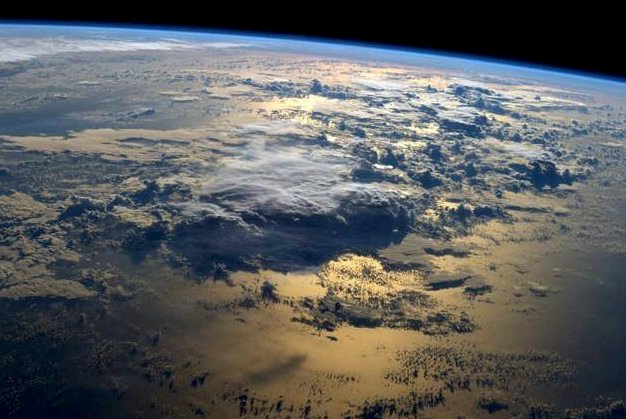9 Different Types of Satellites launched by ISRO
A” satellite” is a man-made object that revolves around a planet or any celestial body in space launched into space by men itself. Technically speaking, a satellite is a machine that orbits around any planet or star. These are launched into space by scientists for specific jobs. We can also call Earth as a satellite since it revolves around the sun. In the same way, the moon is a also a satellite as it orbits around the Earth.
According to Astronomers, the moon is a natural satellite after examining hundreds of satellites revolving around the planets and other dwarf planets as well in the solar system. They have also compiled a list of 67 moons revolving around Jupiter.
Satellites generally move in a ‘geostationary orbit’ and can be categorised based on their function, which is designed for a specific role.
List of nine types of satellites launched by ISRO
- Communications Satellite
- Remote Sensing Satellite
- Navigation Satellite
- Geocentric Orbit type satellites(LEO, MEO, HEO)
- Global Positioning System (GPS)
- Geostationary Satellites (GEOs)
- Drone Satellite, Ground Satellite
- Polar Satellite, Nano Satellites
- CubeSats and SmallSats.
Let’s see each of these satellites in detail:

1. A Communication satellite
It is an artificial satellite that receives signals from an earth station, re transmitting them to other earth stations. The Indian National Satellite (INSAT) system is one of the largest domestic communication satellite systems in the Asia-Pacific region with nine operational communication satellites that were placed in Geostationary orbit. It developed a significant revolution in India’s communications sector in 1983 with the commissioning of INSAT-1B.
Operational communication satellites currently working, are INSAT-3A, INSAT-3C, INSAT-3E, INSAT-4A, INSAT-4B, INSAT-4CR, GSAT-8, GSAT-10 and GSAT-12.

2. Earth Observation Satellites:
ISRO has launched many operational remote sensing satellites, initiating with IRS-1A in 1988. Currently, India has one of the largest constellations of remote sensing satellites in operation. And eleven operational satellites are revolving in orbit – RESOURCESAT-1 and 2, CARTOSAT-1, 2, 2A, 2B, RISAT-1 and 2, OCEANSAT-2, Megha-Tropiques and SARAL. A great variety of these instruments have been sent with these satellites to provide valuable information or data in a diversified spatial, spectral and temporal resolutions to cope up with the requirements of different users in the country as well as for global usage.
The data from these kinds of satellites used for specific applications like agriculture, water resources, urban planning, rural development, mineral prospecting, environment, forestry, ocean resources and disaster management. Earth observation satellites check the planet for changes in temperature to forestation to ice-sheet coverage, etc. The most famous are the Landsat series.
3.Experimental Satellites
ISRO has launched several small satellites which are mainly used for trial purposes. These experiments include Remote Sensing, Atmospheric Studies, Payload Development, Orbit Controls, recovery technology etc.

4. Navigation Satellite
ISRO is working with Airport Authority of India (AAI) to meet the Civil Aviation requirements in establishing the GPS Aided Geo Augmented Navigation (GAGAN) system.
ISRO is working on a regional satellite navigation system called Indian Regional Navigation Satellite System (IRNSS) for meeting the user requirements of the positioning, navigation and timing services based on the indigenous system.
- GPS Aided GEO Augmented Navigation (GAGAN): A Satellite-Based Augmentation System (SBAS) designed with Airport Authority of India (AAI). The main objectives of GAGAN are to provide accurate Satellite-based Navigation services which are required for civil aviation applications. This system is going to be linked with other international SBAS systems, ensuring seamless navigation. The GAGAN Signal-In-Space (SIS) is available through GSAT-8 and GSAT-10.
- Indian Regional Navigation Satellite System (IRNSS): An independent Indian Satellite which is based on the positioning system for critical National applications. Its main objective is to provide Reliable Position, Navigation and Timing based services all over India and its neighbouring countries, to give accuracy to the user. The IRNSS provides two types of services
- Standard Positioning Service (SPS).
- Restricted Service (RS)
Navigational satellites which help ships and planes navigate. The most famous of them is the GPS NAVSTAR satellite.
5. Scientific & Exploration Satellite
It generated with the use of astronomy and space technology to explore outer space. While the exploration of space is carried out mainly by astronomers with telescopes, its physical investigation, though, is conducted both by unmanned robotic space probes and human spaceflight. Space exploration, like its classical form astronomy, is one of the primary sources for space science. Scientific satellites, like the Hubble Space Telescope, perform all kinds of scientific missions. They examine sunspots, gamma rays, etc.
6. Weather satellites
These Satellites help meteorologists to predict the weather or see what’s happening at the moment. The Geostationary Operational Environmental Satellite (GOES) is an excellent example of it. These satellites contain cameras that can return photos of Earth’s weather, either from fixed geostationary positions or from polar orbits.
7. Broadcast satellites
The Satellites broadcast television signals from one point to another (similar to communications satellites).
8. Rescue satellites
The Satellites respond to radio distress signals.
9. Military satellites
Thes satellites used for Nation’s security purposes. But it’s information about the application remains secret. Applications may include relaying encrypted communication, nuclear monitoring, observing enemy movements, early warning of missile launches.
And some other for purposes such as eavesdropping on terrestrial radio links, radar imaging and photography (using what are mostly large telescopes that take pictures of militarily interesting areas).
We’ve created this content for informational purposes only, and it reflects the views of its respective authors/entities (freelancers/interns) and not those of Winspire Magazine. Winspire Magazine does not endorse or vouch for the accuracy of the information provided in this content. It is the reader’s responsibility to verify and ensure the information is correct and up-to-date. Winspire Magazine disclaims any liability or responsibility for any damages or losses from using this content. Therefore, readers should take all necessary steps to verify the accuracy and reliability of any information presented in this content.


